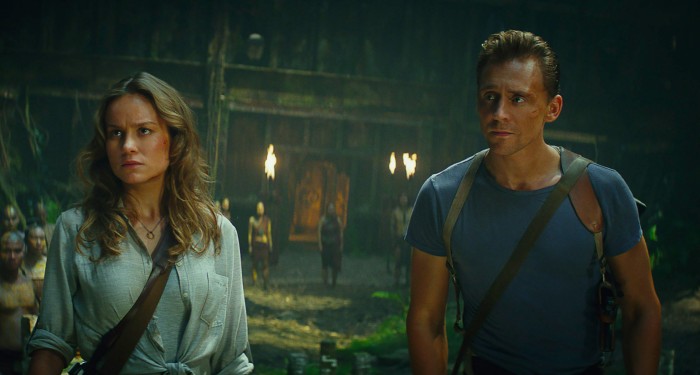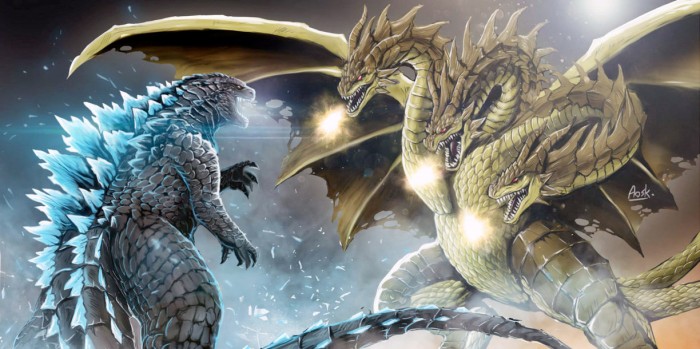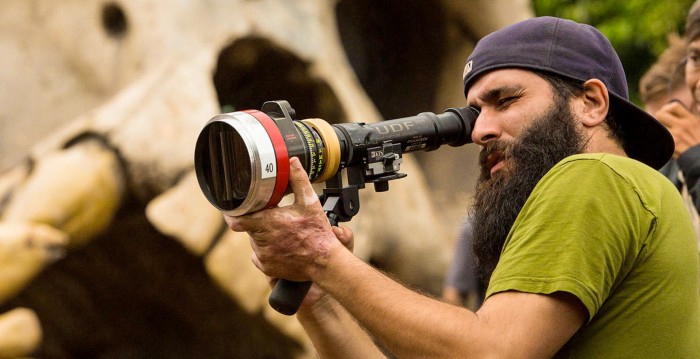Let's Talk About That 'Kong: Skull Island' Credits Scene
Kong: Skull Island isn't just a new take on the classic movie monster that originated on the big screen back in 1933. It's also the second film in the new cinematic universe that launched with Gareth Edwards' new take on Godzilla in 2014. Though Kong: Skull Island takes place all the way back in 1973, it prominently features the government organization Monarch, the same department that kept the existence of Godzilla and other monsters under wraps in Edwards' film.
If you saw Kong: Skull Island in theaters already, you may have seen the post-credits stinger that featured a scene tying the new King Kong adventure even more directly to the new monster movie universe being created by Warner Bros. and Legendary. For those who maybe didn't know about the Kong Skull Island credits scene or didn't quite understand what it was showing, we've got you covered.
SPECIAL NOTE: If you're planning to see Kong: Skull Island and don't want it spoiled, we've included all those details after the jump. Just beware that if you stay after the credits, you'll want to stop paying attention to the scrolling words on screen once the credits for the soundtrack start to roll. Otherwise, just after that there is one particular line in the credits that ruins the surprise of what lies in the scene that follows.
What Goes Down
The scene begins in darkness with James Conrad's (Tom Hiddleston) voice being heard, saying something that sounds like he's mocking the audience for sitting in the darkness. Then we finally see him and Mason Weaver (Brie Larson) in an interrogation room, revealing that Hiddleston's character is talking to whoever is watching them from behind a two-way mirror.
Conrad stresses that they won't tell the Russians what they saw on the island while Weaver playfully says that she'll tell them everything. The twist is that they're not being held by anyone sinister. Instead, it's Monarch employees Houston Brooks (Corey Hawkins) and San (Jing Tian), who come in and basically tell Conrad and Weaver that they're part of Monarch now.
Along with their newfound employment, they have some big news to tell them. Kong isn't the only king. They've found evidence of other monsters existing. A film reel begins to play, and while it doesn't show any actual pictures of these monsters, there are photos of cave paintings that reveal not just Godzilla, but also the silhouettes of other monsters.
The final image shows a painting of Godzilla fighting with a three-headed monster and the scene cuts to black...and we hear the iconic, shrieking roar of Godzilla.
What Does It Mean?
It doesn't take a rocket scientist (or even a Monarch scientist) to understand what this means. The Kong: Skull Island credits scene is clearly teasing an expansion of the monster movie universe by including a few of the classic movie monsters that Godzilla has either teamed up with or fought mercilessly before.
In this case, the three monsters who are showcased include Mothra, a giant moth that can shoot energy beams; Rodan, a kind of pterandon that can fly at high speeds; and King Ghidorah, a three-headed dragon with golden scales and two tails.
Each of the monsters had their own movie from Toho, the creators of Godzilla, but I wouldn't count on them getting their own solo movies anytime soon. Instead, this credits scene appears to be a teaser for Godzilla: King of Monsters, the sequel to the 2014 film, slated to arrive March 22, 2019.
In Kong: Skull Island, we learn about Houston's Hollow Earth theory, which states that there are huge caverns beneath the surface of the planet housing ancient monsters who are on the verge of rising again to take the planet back. It's like that these other monsters will start emerging and some assembly of them will have to team up in order to take down King Ghidorah, who is Godzilla's arch enemy.
Even though Conrad and Weaver being recruited into Monarch indicates that it's possible to see them return in another movie at some point, we must remember that Kong: Skull Island takes place in 1973. And with Godzilla taking place in modern day setting, those characters would be 40 years older. If they come back, they would like need to be aged drastically by make-up or played by older actors.
Jordan Vogt-Roberts Explains How the Credits Scene Came to Be
During our interview with director Jordan Vogt-Roberts, we asked him about how this credits scene came to be:
"We went through a bunch of iterations of what that scene should be. Honestly, initially the scene was like gonna be them in the middle of like the Arctic Ocean and they actually were gonna see like Godzilla surfacing and coming up and I wanted to use our budget for the actual movie, not the post-credits tag. So I think I pitched them the idea of like, well, what if they're in this cool looking conference or this like containment facility? Then they're looking at stuff on like a projector. But we always knew there was gonna be something there. It was meant to be like a much more robust scene."
The director explained that the idea of anyone actually seeing Godzilla in the wild had to be nixed because it didn't fit within the order of events that had been established in Godzilla from 2014:
"If they saw Godzilla though, it also would have broke the narrative of Godzilla because they said they hadn't seen it in that long. So there became a logic issue we were trying to deal with."
Even without seeing Godzilla, the credits scene works really well, and it should get fans excited for what the future of the monster universe holds.


